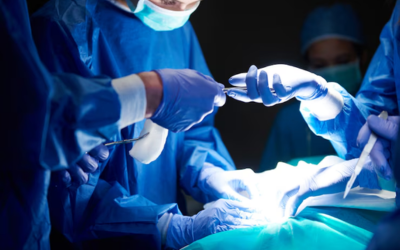Dr. Himali Maniar, an eminent gynecologist in South Bopal, states, “Early diagnosis and individualized treatment are key to managing these conditions effectively and preserving fertility.”

At Nisha Women’s Hospital, led by Dr. Himali Maniar, women receive specialized, compassionate care for gynecological concerns such as uterine fibroids and ovarian cysts.
As one of the best obstetricians and gynecologists in South Bopal, Dr. Maniar’s expertise spans fertility management, advanced gynecological surgeries, and holistic women’s healthcare, ensuring every patient receives a tailored treatment plan in a supportive environment.
Let’s unravel this common yet misunderstood condition.
What are Fibroids?
Fibroids are nonmalignant tumors that occur in or on the uterine walls. They range in size from tiny seedlings to enormous masses that distort the uterus. Some women have no symptoms at all, whereas others can have heavy menstrual flow, pain in the pelvic region, or problems with reproduction. The growths are most likely to occur in a woman’s reproductive years and are usually associated with hormonal imbalances.

Although fibroids are benign, they may disrupt a woman’s lifestyle. The reason is still unclear, but genetics, estrogen dominance, and daily living habits also play a significant role. Fortunately, with the right fibroids treatment, such as medication, hormonal therapies, and less invasive procedures, many women can find relief and take back control of their health.
Now, let’s dive into this equally common condition affecting women’s ovaries.
What are Ovarian Cysts?
Ovarian cysts are fluid-filled sacs that form on or within the ovaries. They are most often harmless and resolve on their own without treatment. Others are painful, some cause bloating, or if they rupture or get too large, they are an issue. Common types include functional cysts, dermoid cysts, and endometriomas.

Like fibroids, ovarian cysts are influenced by hormonal changes, particularly during ovulation. While many women remain asymptomatic, larger cysts or certain types may cause discomfort and impact fertility. Accurate diagnosis and appropriate ovarian cyst treatment ensure that complications like torsion or rupture are prevented.
Wondering why these conditions develop? Here’s what you need to know.
Wondering why these conditions develop? Here’s what you need to know.
- Hormonal Imbalance : High levels of estrogen are responsible for the occurrence of both fibroids and cysts.
- Genetics : A genetic background doubles the risk.
- Obesity : Increased body fat leads to higher production of estrogen, raising susceptibility.
- Dietary Habits and Lifestyle : Large consumption of red meat and minimal intake of green vegetables and fruits tends to increase risk factors.
- Underlying Medical Conditions : Conditions such as endometriosis are associated with the development of ovarian cysts, and uterine issues lead to fibroids.
Let us put the differences in simple words so that you can grasp these conditions easily.
Key Differences Between Uterine Fibroids and Ovarian Cysts
| Aspect | Uterine Fibroids | Ovarian Cysts |
| Nature | Solid growths (non-cancerous) | Fluid-filled sacs |
| Location | Inside/on the uterus | On/inside ovaries |
| Symptoms | Heavy bleeding, pain, fertility issues | Bloating, pain, menstrual irregularities |
| Diagnosis | Ultrasound, MRI | Ultrasound, blood tests |
| Treatment | Medications, surgery | Observation, medication, surgery if needed |
Early detection can result from recognizing early signs, and thus early treatment can be initiated.
Common Symptoms to Watch Out For
Fibroids Symptoms :
- Heavy or long menstrual periods
- Pelvic pain or pressure
- Frequent urination
- Painful intercourse
Ovarian Cyst Symptoms :
- Pelvic or lower abdominal tenderness
- Bloating or heaviness in the abdomen
- Irregular menstrual cycles
- Pain during bowel movements or intercourse
How Are These Conditions Diagnosed?
- Medical History Assessment: Observation of menstrual patterns, family history, and lifestyle factors.
- Pelvic Exam: Physical exam to evaluate any palpable masses or tenderness.
- Ultrasound Imaging: A safe and very useful way to see fibroids and cysts.
- MRI Scans: For excellent imaging, particularly in the case of large fibroids or complicated cysts.
- Blood Tests: Like hormone panels and CA-125 tests (to rule out malignancy).
- Laparoscopy: A minimal invasion surgical approach for direct visualization if non-invasive assessments are inconclusive.
Curious about how these conditions are treated? Here’s what you should know!
Treatment Options for Uterine Fibroids
- Watchful Waiting :
For minimal, symptom-free fibroids, periodic monitoring without immediate treatment is usually advised.
For minimal, symptom-free fibroids, periodic monitoring without immediate treatment is usually advised.

- Medications :
Hormonal treatments such as GnRH agonists or oral contraceptives reduce the size of fibroids and control heavy bleeding during menstruation.

- Minimally Invasive Methods:
Methods such as Uterine Artery Embolization (UAE) deprive fibroids of blood supply, making them shrink without undergoing major surgery.

A surgical process in which fibroids are removed, keeping the uterus intact, suitable for females who are keen on fertility.

Total removal of the uterus, reserved for extreme cases when other interventions are unsuccessful or giving birth is no longer an issue.

Treatment Options for Ovarian Cysts
- Watchful Waiting :
Some functional cysts shrink and disappear by themselves; regular ultrasounds assist in checking their size and growth.
- Medications :
Birth control pills prevent the development of new cysts and regulate periods.

- Cyst Aspiration :
A minimally invasive procedure where fluid is drained from the cyst using a needle guided by ultrasound.

- Laparoscopic Surgery :
This procedure removes problematic cysts through small incisions, minimizing recovery time and scarring.

- Oophorectomy :
In severe cases, removal of the affected ovary may be necessary, especially if there’s a risk of cancer or torsion.
Let’s address one of the most concerning questions for women of reproductive age.
Can Uterine Fibroids and Ovarian Cysts Affect Fertility?
Yes, both conditions can impact fertility. Uterine fibroids can distort the shape of the uterus, interfere with embryo implantation, and cause miscarriages. Larger fibroids may block the fallopian tubes, preventing fertilization.
Similarly, certain types of ovarian cysts, such as endometriomas or polycystic ovaries, can disrupt ovulation and hormone levels, making conception more challenging. Timely and personalized treatment under the care of an experienced gynecologist can significantly improve fertility outcomes.
When Should You Consult a Gynecologist?
Here’s when it’s time to stop waiting and act:
- Recurring pelvic pain or discomfort
- Unexplained menstrual cycle changes
- Trouble getting pregnant
- Severe bloating or distension in the abdomen
- Heavy or irregular bleeding
If any of these symptoms get you off track from your daily life, it is necessary to get expert care from a trained gynecologist to get the right diagnosis and proper treatment.
Frequently Asked Questions
1. Can fibroids and cysts occur at the same time?
2. Are these conditions cancerous?
3. What lifestyle changes help manage fibroids and cysts?
4. Is surgery always required for cysts and fibroids?
5. How do these conditions impact pregnancy?
Reference links:
https://www.healthline.com/health/womens-health/fibroid-vs-cyst
https://www.slideshare.net/slideshow/cysts-and-fibroids/153721650
Disclaimer: The information shared in this content is for educational purposes and not for promotional use.

